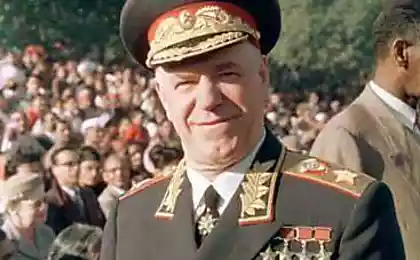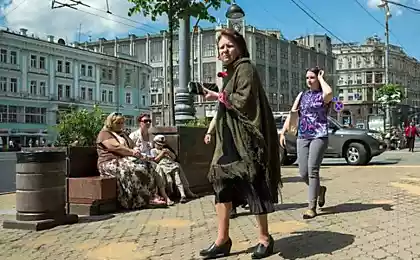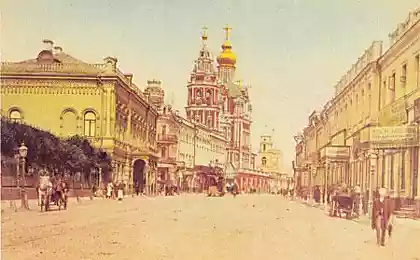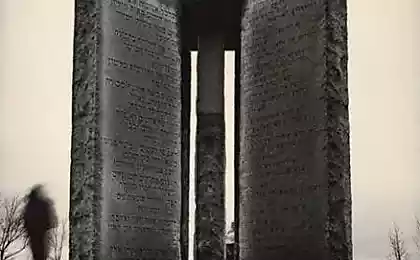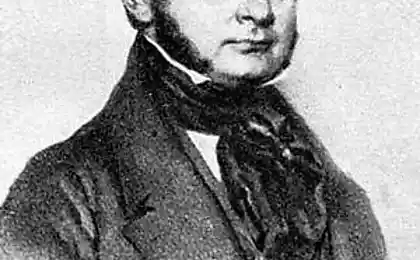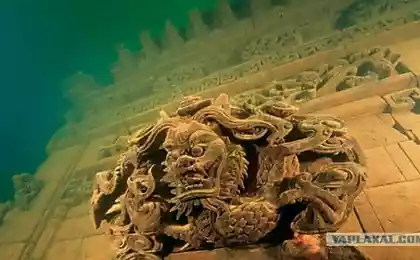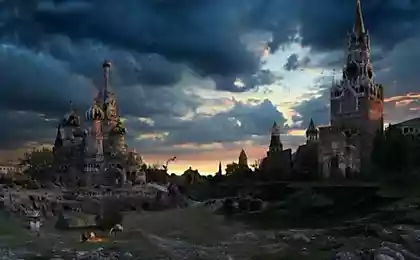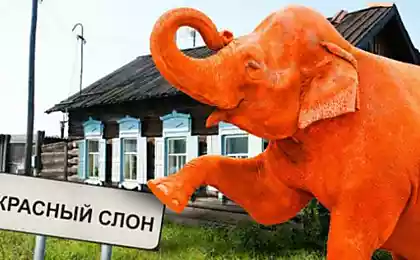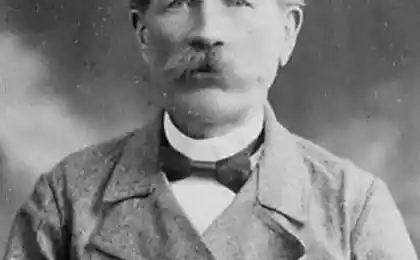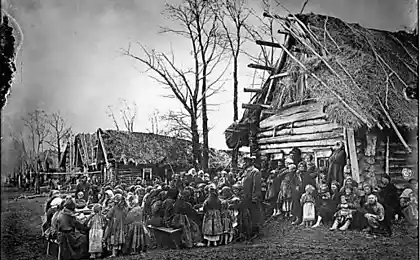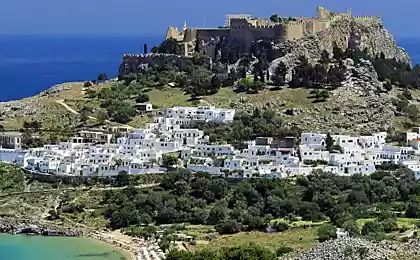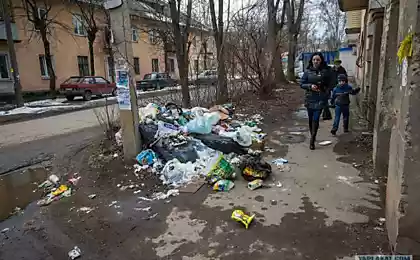889
The ruins of the villages of the Tver province.
Who of us in childhood did not like to climb the abandoned buildings? I YaPovtsam propose to do in this pre-Sabbath evening, a small virutalny trip. Can slip with accommodation - blame prolonged weekend, so be patient)
All materials taken from the architectural blog proof Authorship - pav_leg.
After waiting for a favorable weather for traveling I decided not to waste time and going into another trip to the forgotten corners of the Tver province.

At this time, our itinerary runs through the eastern part of the Rzhev area where the forgotten ruins preserve the memory of disappeared settlements.
When you turn off the road A-112 to the first scheduled to visit the project attracted the attention of standing in a vacant lot near the road arch - all that remained of the once large village Shchapovo located from Tver in the 104 and from Rzhev to 15 miles.

The arch is a fragment of a stone wall of St. Michael's church, built in 1844 and had three altars: cold Archangel Michael; the warm south of the Prophet Elijah, north of St. Nicholas.
Parishioners in 14 surrounding villages as of 1914 according to the Handbook of the Tver diocese - 2099 men, 2358 women.
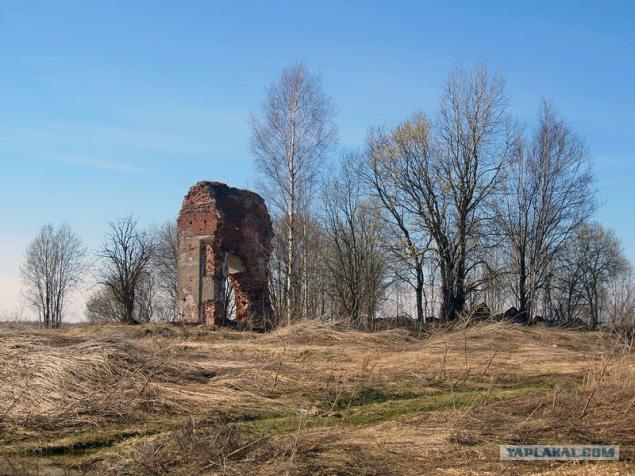
We leave behind a wasteland, and follow to the village Voronchino along which used to be a road to the farm jesters.
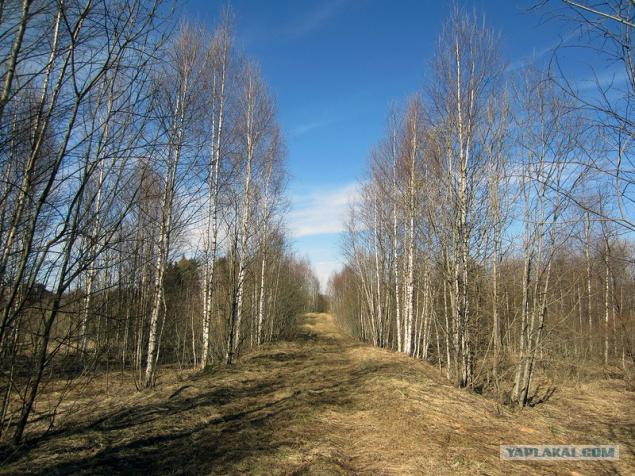
Tract jesters from Tver to 105 years of age, from Rzhev to 16 miles, is located on the banks of the river plains northeast of Vile Village Voronich.
In the old area of the village was part of Merzsky Shutova camp Staritskogo inheritance of Prince Vladimir Andreyevich and contractual documents exchanged in 1566 was Ivan the Terrible in the Dmitrov inheritance.
In the second half of XVIII century it belonged to the landlords Poltoratsky small village, and in the first half of the XIX century - State Councilor Fedor Karpovich wound, which was built in the manor house. A wound After the death of the estate, and with it two major flour mills and a brick factory, was inherited by his children.
Up to the present day from the estate preserved Church of the Intercession, around which the cemetery is located.

Cross the field and move closer.
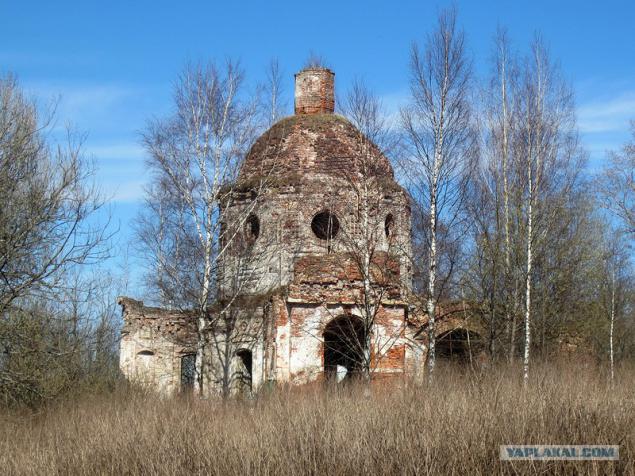
A brick with white stone details baroque church was built in 1771-76 years at the expense of landlords Poltoratsky. There were two of the throne: the chief of the Holy Virgin and St. Nicholas pridelnyh.
In terms of cross-shaped: a massive two-tier adjoin octagon symmetrical projections of the altar and chapels; the bulk of closed high cloistered vault crowned with a hollow drum. During the XIX century the church was reconstructed several times, built a bell tower from the west, and in 1854 - the southern chapel, violated the original composition.
The interior remains of paintings, made in the beginning of the XIX century Rzhevsky painter Ivan Stepanov.
Parishioners as of 1914 according to the Handbook of the Tver diocese - 513 men, 543 women
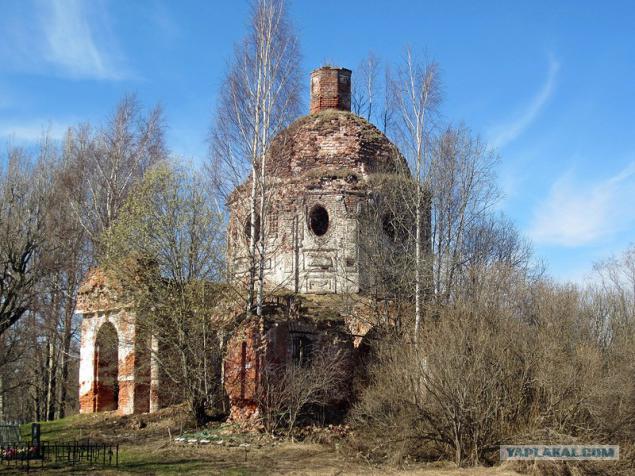
Some of the graves in the cemetery looks very well maintained, while the church is a rather sad spectacle.
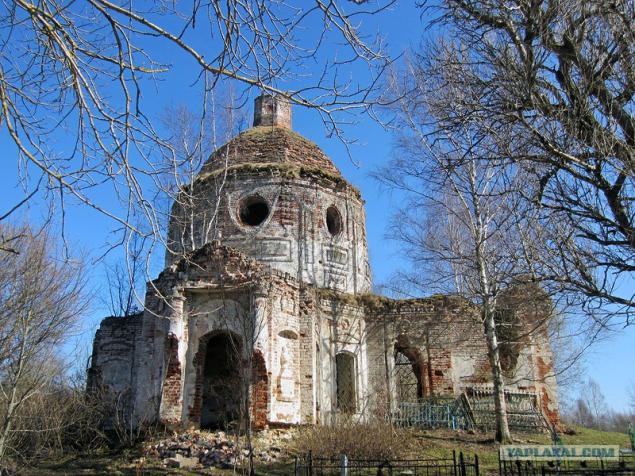
Masonry everywhere showered ...
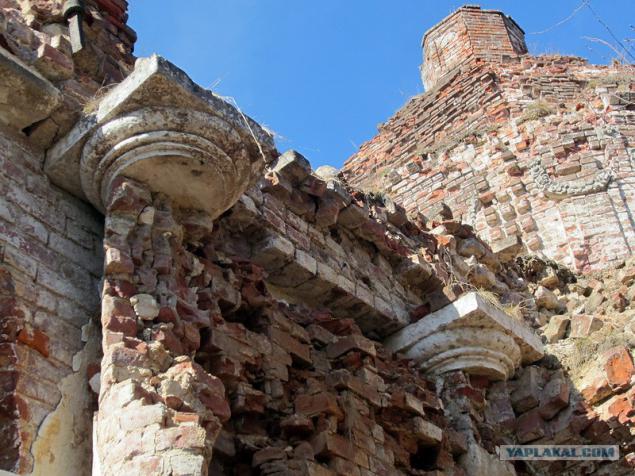
... But well preserved chapels niches pots.
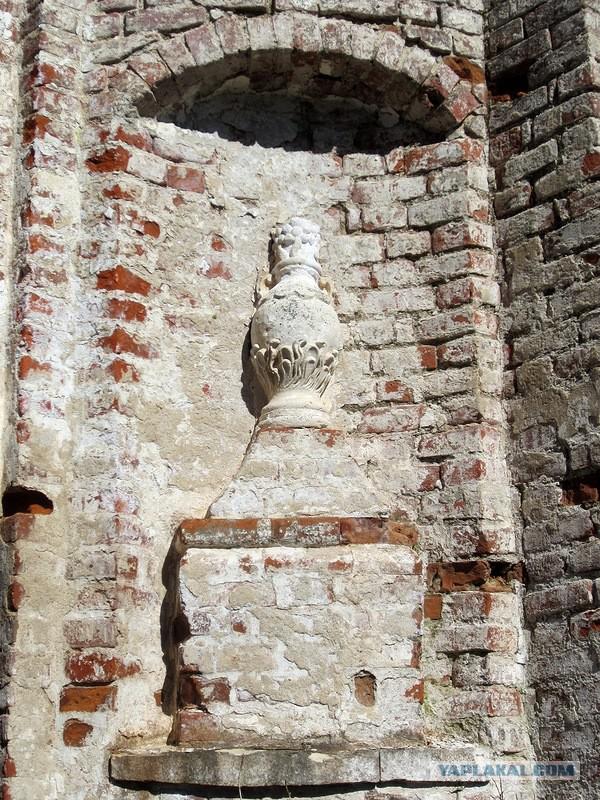
Attached later bell tower and south aisle to the present day almost did not survive.
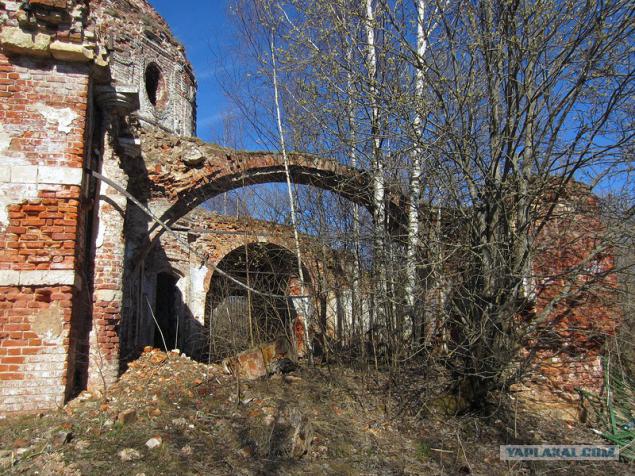
Lost also the interior.
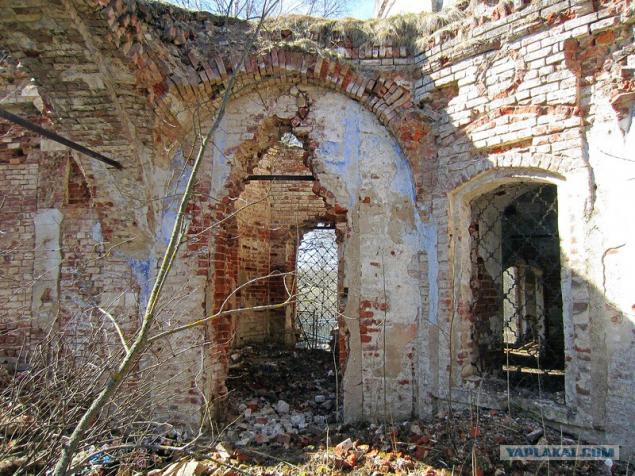
Curiously, the light box octagon have different shapes - round to the cardinal points and the corners of the oval.
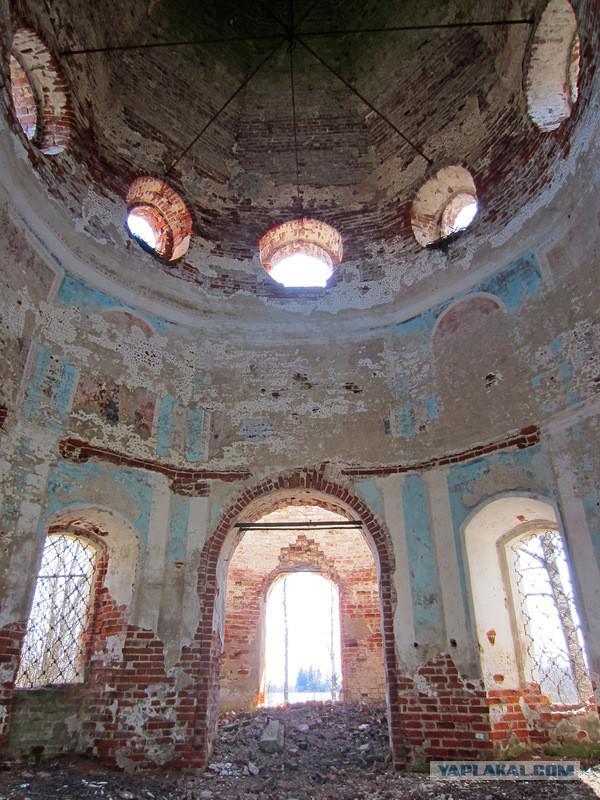
We are leaving the ruined temple and head on towards the village Masalskoe that is located at the confluence of the Volga River Iruzhi in 28 miles east of the city of Rzhev.
For the first time mentioned in the small village Masalskoe end of the XVIII century, and in the middle of the XIX century it belonged to Anna Yakovlevna Pashchenko and her husband, Lieutenant-Captain Nicholas L. artillery. When the manor was a water mill and a plant for the production of bricks.
To this day, the ruins of the main manor house.
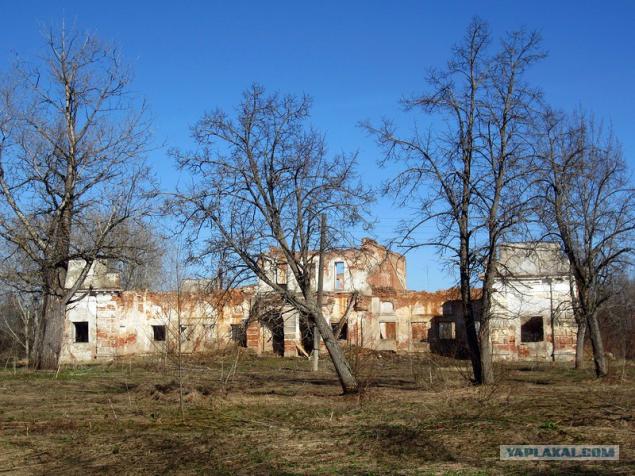
After the October Revolution of 1917 on the site of the manor farm was organized in 1930, it was called "Five-Year Plan", and later - "2nd Five-Year Plan." Locality, which arose on the site of the manor, also called State Farm Five-Year Plan.
During World War II it was occupied by the Germans Masalskoe in mid-October 1941 and released in early January 1942.
After the war the center of the farm "2nd Five-Year Plan" has become a village Nut and former small village became known as the village Massalsky.
In Soviet times, up to 80-ies of XX century in partitioned cubicles in the room, indoor "manor house" state farm workers living 2nd Five-Year Plan.
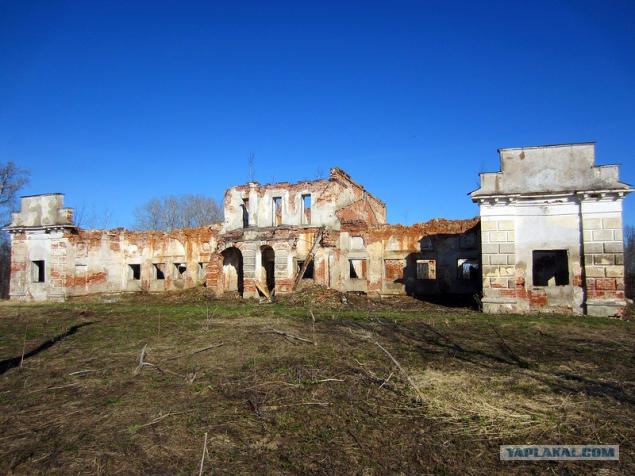
From decorating the main entrance to the building of the portico was only one column.
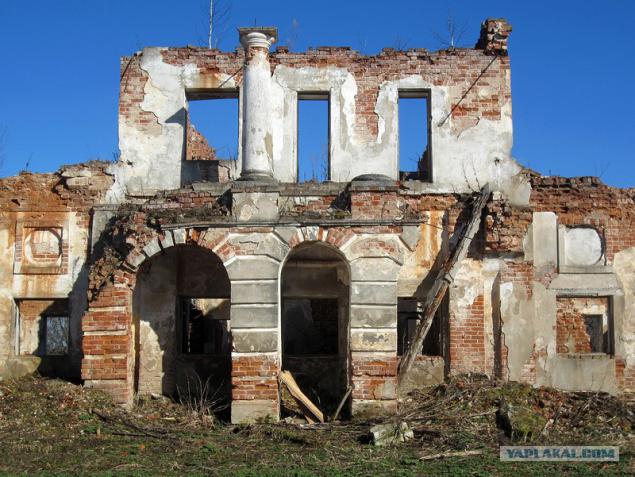
During the construction of the estate it has been used a unique system of heating furnace. The two-story building was heated by a small number of furnaces, located on the ground floor, chimneys which were inside the walls and heated the entire building.
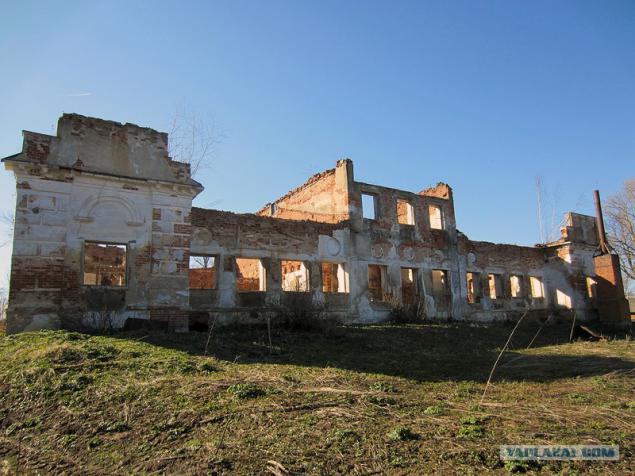
Beating around the ruins of the tour proceeds through a side entrance into the ...
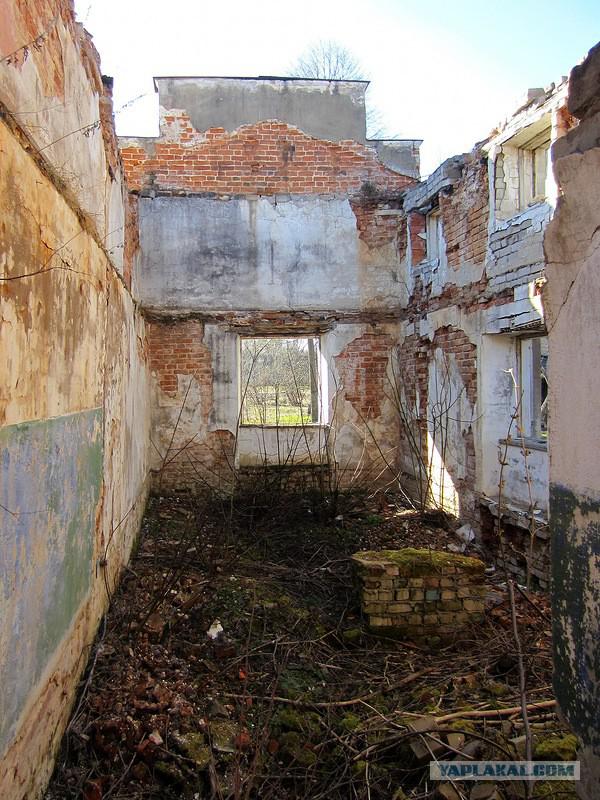
... Where we are met by the devastation ...

... And emptiness.
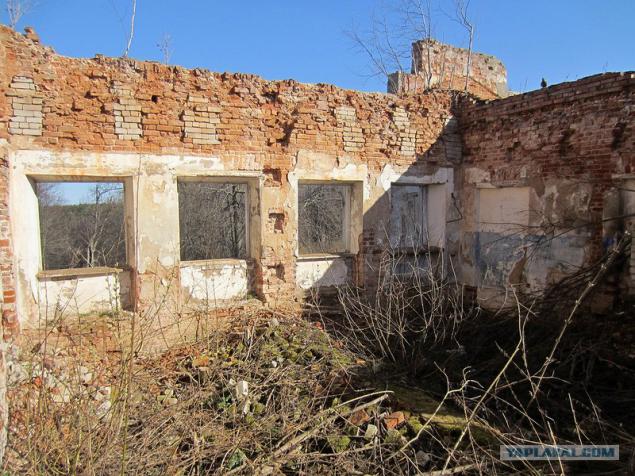
In the first less than a mile north of the estate of the river Iruzhey on a promontory formed by the steep curve of the channel, it was the village of the same name with the Trinity Church, in the parish who were all surrounding villages Iruzhskoy parish Zubtsov County.
There is what we go.
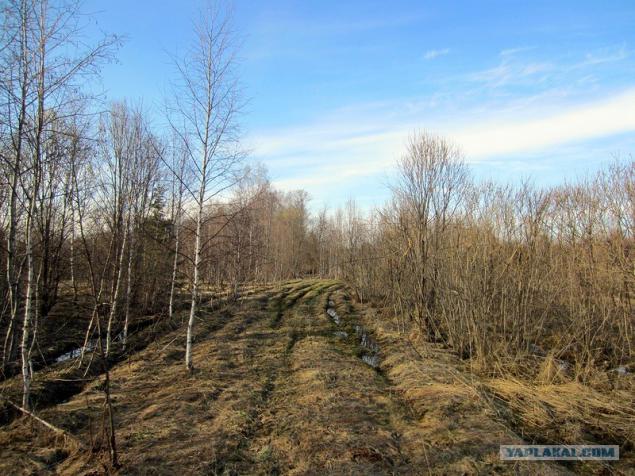
After barely a kilometer of track tractor guess ourselves on a steep bank of the river on the opposite bank of which one can see the ruins of the church.
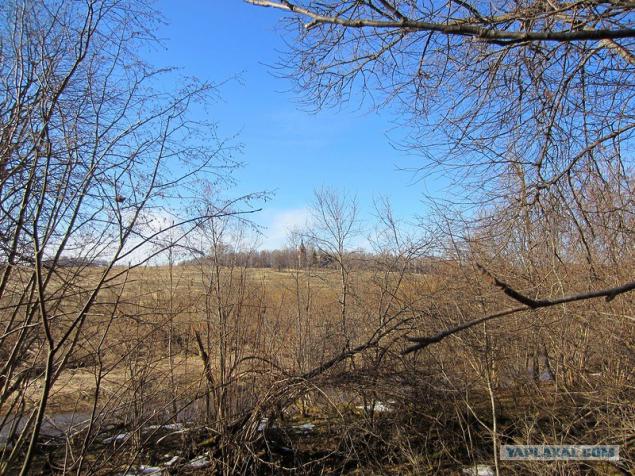
The stone church built in the middle of the village in 1890 at the expense of the parishioners, instead of burnt wood in 1888. There were three of the throne: the cold of the Holy Myrrh-Bearers; Warm Kazan Mother of God and of the Holy Great Martyr Demetrius. Painting in the church performed Rzhevsky painter I. Sadovnikov in 1896.
Parishioners as of 1914 according to the Handbook of the Tver diocese - 674 men and 777 women.
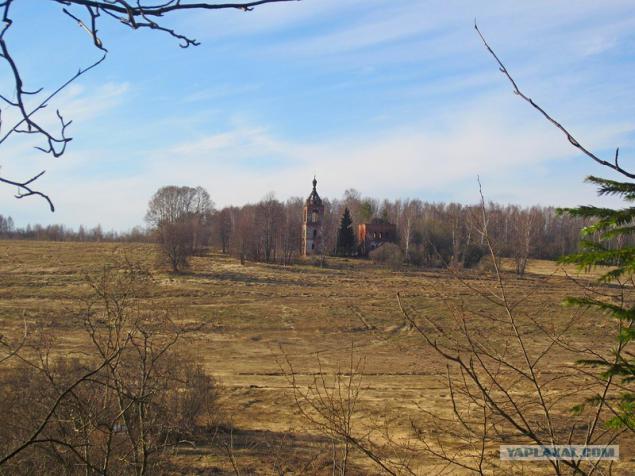
However, the move to the opposite shore was not possible - the river turned out to be fast and deep, and the bridge nearby was not found.
We'll have to turn around and go way back.
Thank you!
When writing the report, used materials:
1. "Tver estates [Impressions] first book" Tver 2006 .;
2. Site hram-tver.ru
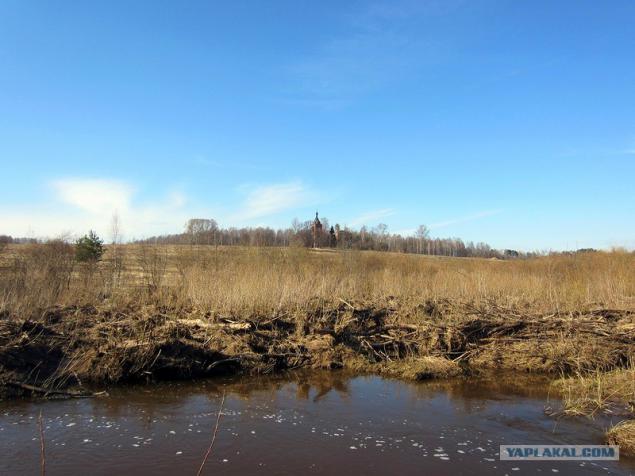
Source:
All materials taken from the architectural blog proof Authorship - pav_leg.
After waiting for a favorable weather for traveling I decided not to waste time and going into another trip to the forgotten corners of the Tver province.

At this time, our itinerary runs through the eastern part of the Rzhev area where the forgotten ruins preserve the memory of disappeared settlements.
When you turn off the road A-112 to the first scheduled to visit the project attracted the attention of standing in a vacant lot near the road arch - all that remained of the once large village Shchapovo located from Tver in the 104 and from Rzhev to 15 miles.

The arch is a fragment of a stone wall of St. Michael's church, built in 1844 and had three altars: cold Archangel Michael; the warm south of the Prophet Elijah, north of St. Nicholas.
Parishioners in 14 surrounding villages as of 1914 according to the Handbook of the Tver diocese - 2099 men, 2358 women.

We leave behind a wasteland, and follow to the village Voronchino along which used to be a road to the farm jesters.

Tract jesters from Tver to 105 years of age, from Rzhev to 16 miles, is located on the banks of the river plains northeast of Vile Village Voronich.
In the old area of the village was part of Merzsky Shutova camp Staritskogo inheritance of Prince Vladimir Andreyevich and contractual documents exchanged in 1566 was Ivan the Terrible in the Dmitrov inheritance.
In the second half of XVIII century it belonged to the landlords Poltoratsky small village, and in the first half of the XIX century - State Councilor Fedor Karpovich wound, which was built in the manor house. A wound After the death of the estate, and with it two major flour mills and a brick factory, was inherited by his children.
Up to the present day from the estate preserved Church of the Intercession, around which the cemetery is located.

Cross the field and move closer.

A brick with white stone details baroque church was built in 1771-76 years at the expense of landlords Poltoratsky. There were two of the throne: the chief of the Holy Virgin and St. Nicholas pridelnyh.
In terms of cross-shaped: a massive two-tier adjoin octagon symmetrical projections of the altar and chapels; the bulk of closed high cloistered vault crowned with a hollow drum. During the XIX century the church was reconstructed several times, built a bell tower from the west, and in 1854 - the southern chapel, violated the original composition.
The interior remains of paintings, made in the beginning of the XIX century Rzhevsky painter Ivan Stepanov.
Parishioners as of 1914 according to the Handbook of the Tver diocese - 513 men, 543 women

Some of the graves in the cemetery looks very well maintained, while the church is a rather sad spectacle.

Masonry everywhere showered ...

... But well preserved chapels niches pots.

Attached later bell tower and south aisle to the present day almost did not survive.

Lost also the interior.

Curiously, the light box octagon have different shapes - round to the cardinal points and the corners of the oval.

We are leaving the ruined temple and head on towards the village Masalskoe that is located at the confluence of the Volga River Iruzhi in 28 miles east of the city of Rzhev.
For the first time mentioned in the small village Masalskoe end of the XVIII century, and in the middle of the XIX century it belonged to Anna Yakovlevna Pashchenko and her husband, Lieutenant-Captain Nicholas L. artillery. When the manor was a water mill and a plant for the production of bricks.
To this day, the ruins of the main manor house.

After the October Revolution of 1917 on the site of the manor farm was organized in 1930, it was called "Five-Year Plan", and later - "2nd Five-Year Plan." Locality, which arose on the site of the manor, also called State Farm Five-Year Plan.
During World War II it was occupied by the Germans Masalskoe in mid-October 1941 and released in early January 1942.
After the war the center of the farm "2nd Five-Year Plan" has become a village Nut and former small village became known as the village Massalsky.
In Soviet times, up to 80-ies of XX century in partitioned cubicles in the room, indoor "manor house" state farm workers living 2nd Five-Year Plan.

From decorating the main entrance to the building of the portico was only one column.

During the construction of the estate it has been used a unique system of heating furnace. The two-story building was heated by a small number of furnaces, located on the ground floor, chimneys which were inside the walls and heated the entire building.

Beating around the ruins of the tour proceeds through a side entrance into the ...

... Where we are met by the devastation ...

... And emptiness.

In the first less than a mile north of the estate of the river Iruzhey on a promontory formed by the steep curve of the channel, it was the village of the same name with the Trinity Church, in the parish who were all surrounding villages Iruzhskoy parish Zubtsov County.
There is what we go.

After barely a kilometer of track tractor guess ourselves on a steep bank of the river on the opposite bank of which one can see the ruins of the church.

The stone church built in the middle of the village in 1890 at the expense of the parishioners, instead of burnt wood in 1888. There were three of the throne: the cold of the Holy Myrrh-Bearers; Warm Kazan Mother of God and of the Holy Great Martyr Demetrius. Painting in the church performed Rzhevsky painter I. Sadovnikov in 1896.
Parishioners as of 1914 according to the Handbook of the Tver diocese - 674 men and 777 women.

However, the move to the opposite shore was not possible - the river turned out to be fast and deep, and the bridge nearby was not found.
We'll have to turn around and go way back.
Thank you!
When writing the report, used materials:
1. "Tver estates [Impressions] first book" Tver 2006 .;
2. Site hram-tver.ru

Source:

